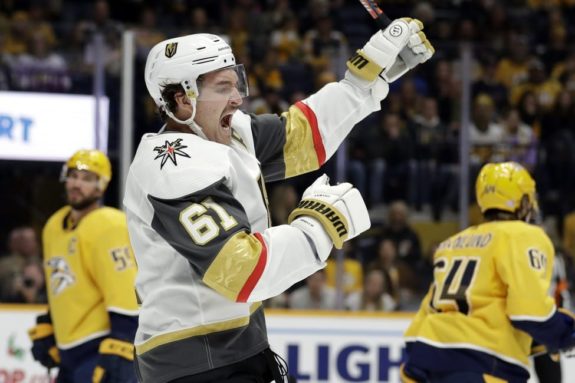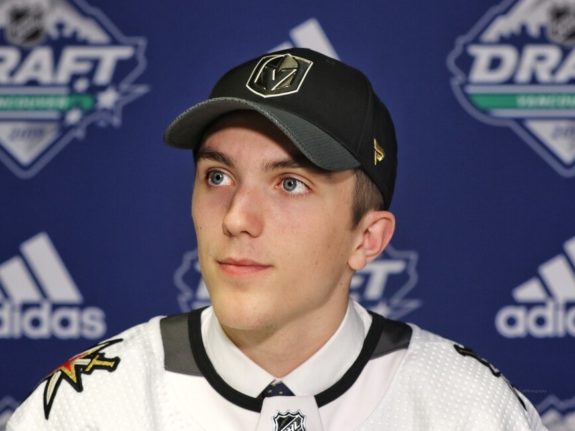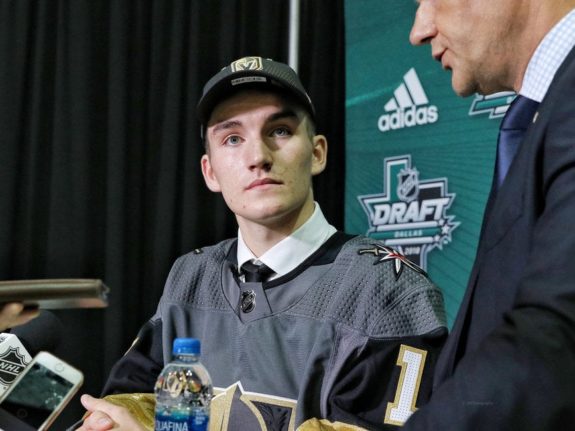Trading is tough at the best of times, requiring a match between teams that suits each one’s direction and a fit in both assets and money. The pandemic has only complicated matters further, with travel restrictions creating cross-border trade challenges.
For the Vegas Golden Knights, those circumstances, coupled with a well-publicized tight cap situation and a lack of significant lineup holes to address, have prompted speculation that the Honda West Division-leading club might keep quiet ahead of April 12. That would certainly buck the trend of recent seasons, in which Vegas has come in just under the deadline on deals for Robin Lehner, Nick Cousins, Alec Martinez, and even captain Mark Stone.

Even if a deal matching the size and scope of adding a Lehner or a Stone is highly unlikely to materialize, general manager Kelly McCrimmon wouldn’t be doing his job properly if he didn’t at least prepare for the possibility of such a move. That requires checking in on what’s out there and who might be available that can help your team, but it also involves knowing what you have to offer. The Golden Knights’ solid prospect pool and fairly stable collection of draft picks ensure McCrimmon possesses the tools to be trade-ready should an opportunity arise.
Here is a ranking of the organization’s best trade assets (note: I’m only including plausible ones – Vegas isn’t offering up a Shea Theodore, for instance):
1) Peyton Krebs
I considered placing Cody Glass here, but I can’t see any possible trade target who would interest Vegas enough to dangle an already-productive 21-year-old center with No. 1 potential on a cheap contract that lasts through next season. Much of that description applies to Peyton Krebs, Vegas’ top prospect, as well.

Krebs may not be producing at the NHL level right now as Glass is, but there’s little doubt that the 20-year-old, a point-per-game player across stops in the AHL and WHL this season, is ready to make the jump. However, as his demotion from Henderson to the WHL’s Winnipeg ICE highlights, finding space with the big club won’t be easy. Of Vegas’ options down the middle, Glass is a future building block, while William Karlsson is signed through 2027 and Chandler Stephenson through 2024.
You’d hate to lose a future star in Krebs, but the club’s depth at the center spot allows them to at least entertain the possibility of using their best prospect as a highly coveted trade chip.
2) The Young Blue Liners (Zach Whitecloud, Nic Hague, Dylan Coghlan)
As with Glass, it’s hard to see the Golden Knights being eager to part with young, cost-controlled contributors to the big club. After all, the trio of Zach Whitecloud, Nic Hague, and Dylan Coghlan have logged big minutes on the back end, all while each counting for less than $800,000 against the cap. That combination of solid productivity on bargain, rookie-scale contracts seems like manna from heaven for a cap-crunched team like Vegas, so why would they unload these guys?

Well, McCrimmon will have some tough decisions forthcoming as these entry-level deals expire. Hague will be in need of a new contract at season’s end, while Whitecloud and Coghlan will be restricted free agents after next season, at the same time as Glass. In all likelihood, Vegas can’t afford all of them, so it might be time to sell off one or two while they still have enough term left to retain trade value.
3) Secondary Prospects
Krebs isn’t the only player in the Vegas organization with a bright future in the league. Ivan Morozov, Brendan Brisson, Kaedan Korczak, and Pavel Dorofeyev all possess the raw skills to play in the NHL for a long time. Although Nick Suzuki (Montreal) and Erik Brannstrom (Ottawa) still have the chance to develop into stars, the club has – to date – demonstrated a keen understanding of which young prospects they can part ways with in trades without living to regret it.

While all four prospects have considerable potential, none seem particularly close to the big leagues just yet. Morozov is turning heads in the KHL for St. Petersburg SKA, Brisson is starring with the Michigan Wolverines of the NCAA, and Korczak and Dorofeyev are getting their feet wet with the Henderson Silver Knights. In short, these are precisely the type of future assets that you sacrifice for a run at the Cup.
4) Draft Capital
Perhaps the most impressive part of the Golden Knights’ Stanley Cup-caliber roster is that it hasn’t left the organization’s draft pick cache barren. While the benefits of their expansion draft stockpiling are largely over, Vegas has maintained their own first and second-rounders moving forward while also adding the New Jersey Devils’ 2021 second-round pick (along with QMJHL standout blueliner Lukas Cormier) in the Nikita Gusev trade.
The funny thing is the Devils’ pick might be of similar value to Vegas’ own first this summer. While the Golden Knights expect to pick near the back of the draft’s first 32 selections, New Jersey will surely be among the first teams to pick each round, owing to their 9-13-4 mark in the MassMutual East Division. Neither selection will land a sure-thing prospect, and the trade value attached to the pick will surely reflect that. But what will likely be two picks among the top 40 can only help in pursuit of trade deadline reinforcements.
McCrimmon has done a nice job of creating options for Vegas. They have a deep enough developmental system that could potentially prolong their success even as some of the team’s current established veterans begin to decline. On the other hand, they have a strong combination of assets to entice a trade partner should the right deal come along. Maybe that won’t happen before April 12, but if it does, McCrimmon’s front office should be ready to strike.